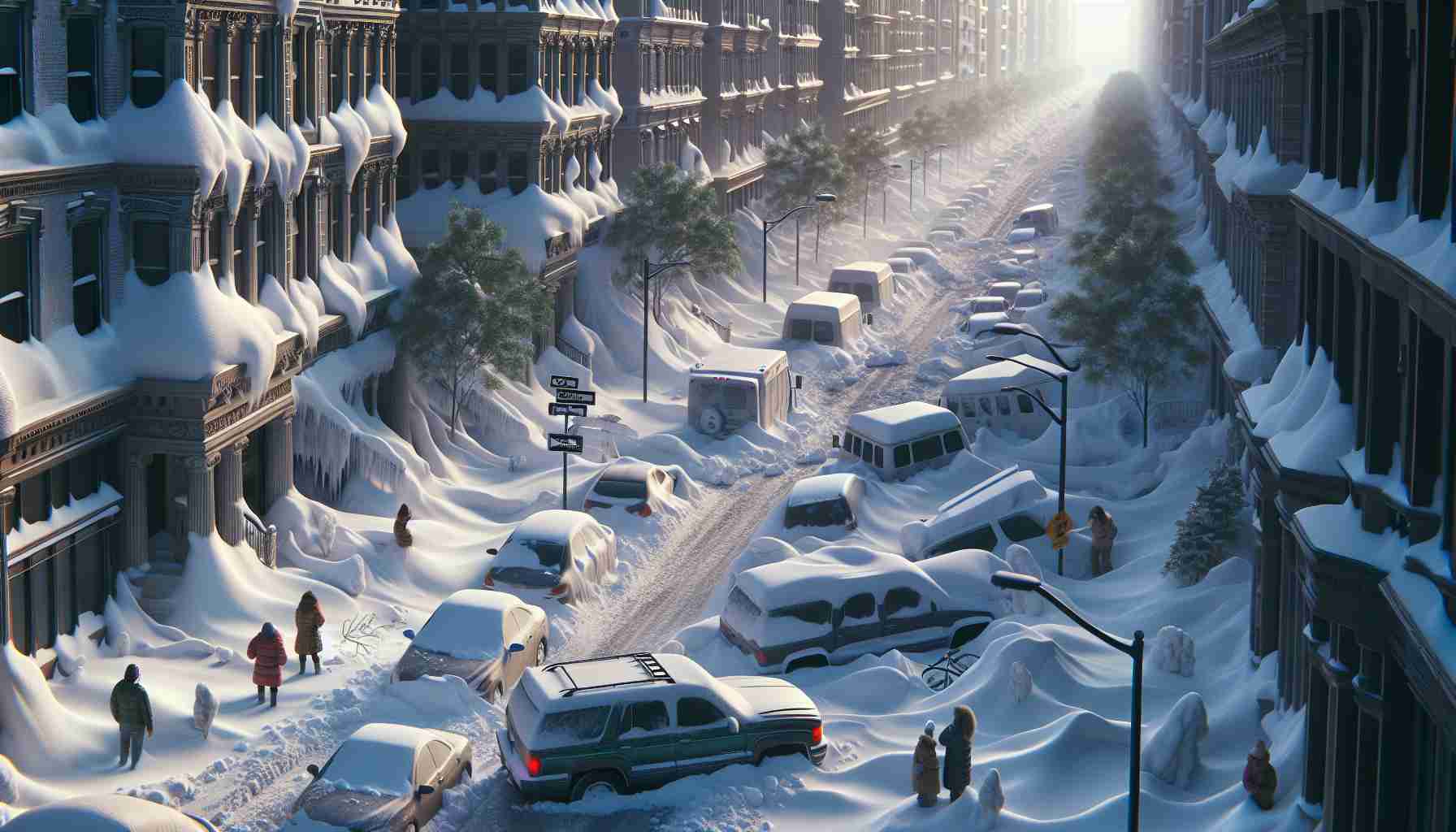Record Snowfall and Arctic Cold Create Travel Nightmares
A historic winter storm is wreaking havoc across the United States as the new year kicks off. The central and eastern regions are grappling with the most significant snowfall in a decade, with some areas already reporting over 90 centimeters of snow accumulation.
On January 5, the National Weather Service issued severe winter weather warnings, highlighting the potential for ice, strong winds, and relentless cold temperatures. Many locations have already experienced heavy snowfall, with an average of 35 centimeters reported. Authorities warned that an additional 20 centimeters could make travel nearly impossible.
States such as Kansas and parts of Indiana are facing treacherous conditions, as major rail lines are covered in snow and ice, hampering transportation. Winter storm warnings extend to the northern stretches of Interstate 70, with Kansas and Missouri bracing for extreme weather impacts.
With wind gusts reaching over 72 mph, the storm’s severity is notable, and its effects may soon extend to New Jersey and beyond. The National Weather Service anticipates that over 63 million people across the nation could be affected by this harsh winter phenomenon.
In Indiana, severe snow is expected, raising concerns about potential tornado activity, prompting police to urge drivers to stay off the roads until plowing is completed. As snow continues to blanket states from Kansas to Kentucky, air and rail travel has faced significant disruptions. The severe cold, linked to a powerful polar vortex, is causing chilling conditions nationwide, exacerbated by the rapid melting of Arctic ice.
Winter Storm Chaos: How to Navigate Travel Amid Record Snowfalls
As the new year begins, a historic winter storm is causing widespread travel disruptions across the United States. The central and eastern regions are currently experiencing the most significant snowfall in a decade, with accumulations exceeding 90 centimeters (approximately 35 inches) in some locations. The National Weather Service has issued severe winter weather warnings, alerting residents to the dangers posed by ice, strong winds, and dangerously low temperatures.
Key Features of the Storm
– Severe Warnings and Accumulations: As of January 5, many areas have seen exceptional snowfall averages of about 35 centimeters, with predictions of an additional 20 centimeters in some regions, making travel nearly impossible.
– Impact on Transportation: States like Kansas, Indiana, and Missouri are facing treacherous conditions that have severely hampered transportation networks. Major rail lines are covered, and authorities have advised against travel until conditions improve.
– Wind Gusts: Wind gusts have reached astonishing speeds of over 72 mph, adding to the storm’s severity. This combination of snow and wind increases the risk of whiteout conditions and blizzards.
Travel Tips and Safety Precautions
1. Stay Informed: Keep track of weather updates through local news channels and the National Weather Service. Understanding the latest warnings can help you plan your travel accordingly.
2. Delay Travel: If possible, avoid traveling during severe weather. Many authorities, especially in affected states like Indiana, have advised drivers to stay off the roads until plowing operations are completed.
3. Emergency Preparedness: If travel is unavoidable, prepare your vehicle with emergency supplies, including blankets, a flashlight, food, and water. Ensure your phone is charged and equipped with emergency contact numbers.
4. Public Transportation Alternatives: Consider using public transport services that might still be operational, as they are often equipped to deal with extreme weather conditions.
Potential for Tornado Activity
Interestingly, the severe winter weather is also raising concerns about the potential for tornado activity in some areas. The unpredictability and danger of such severe weather patterns highlight the importance of remaining vigilant and prepared.
Current Impact and Future Predictions
With over 63 million people potentially affected by this storm, the after-effects are likely to linger for days. Air travel and rail services are already witnessing significant disruptions, leading to cancellations and delays. The conditions are exacerbated by a powerful polar vortex, which is generating chilling temperatures nationwide.
As severe cold continues to persist, travelers should remain flexible with their plans and continuously monitor transportation schedules to avoid surprises.
For ongoing updates and further information about severe weather responses, visit the National Weather Service at weather.gov.
Conclusion
The unprecedented snowfall and associated cold temperatures call for cautious navigation through winter travel. By staying informed and prepared, you can mitigate risks and ensure safety for yourself and your loved ones during this extreme weather event.
